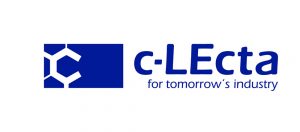 Appropriate handling and removal of nucleic acids is crucial for many applications in red biotechnology and molecular biology. Upon the production of many biopharmaceuticals in fermentative processes (e.g., proteins, antibodies, and vaccines), nucleic acids are concomitantly generated and accumulated in culture broth, particularly when microbial cells are disrupted during work-up. Such accumulation increases the viscosity of the liquid fraction significantly and complicates downstream processing and purification. To be marketable and comply with strict safety regulations, biopharmaceutical products need to be nearly free of nucleic acids. Therefore, a nucleic acid removal step is mandatory before commercialization of (fermented) biopharmaceuticals is considered.
Appropriate handling and removal of nucleic acids is crucial for many applications in red biotechnology and molecular biology. Upon the production of many biopharmaceuticals in fermentative processes (e.g., proteins, antibodies, and vaccines), nucleic acids are concomitantly generated and accumulated in culture broth, particularly when microbial cells are disrupted during work-up. Such accumulation increases the viscosity of the liquid fraction significantly and complicates downstream processing and purification. To be marketable and comply with strict safety regulations, biopharmaceutical products need to be nearly free of nucleic acids. Therefore, a nucleic acid removal step is mandatory before commercialization of (fermented) biopharmaceuticals is considered.
How can nucleic acids of a biological sample be removed without degrading a marketable product? Some traditional approaches include sonication, precipitation, and extraction strategies, which have been demonstrated in different applications dealing with fermentative units. However, such options often require relatively severe processing conditions (e.g., addition of chemicals or solvents, temperature, pressure). Thus, a partial degradation of targeted biopharmaceuticals can be expected to occur during the nucleic acid removal step. That can lead to unaffordable downstream units and to unacceptable losses of production efficiency and purity.
Just fill out this form to view the full PDF and learn more.
